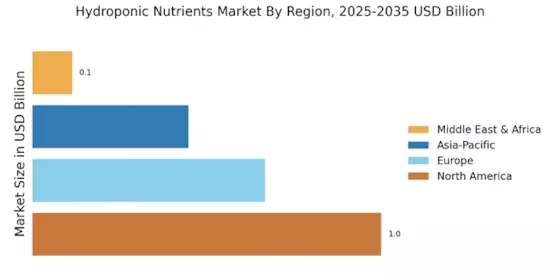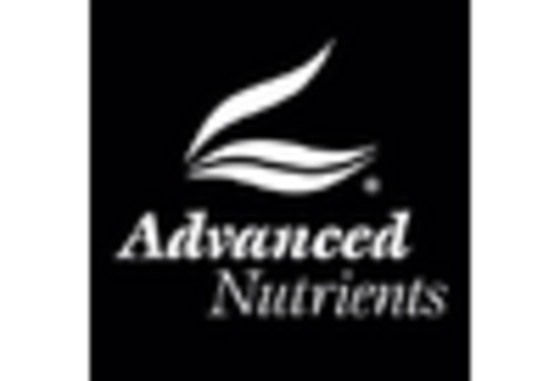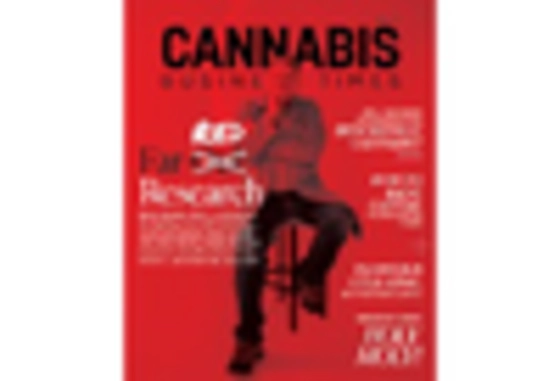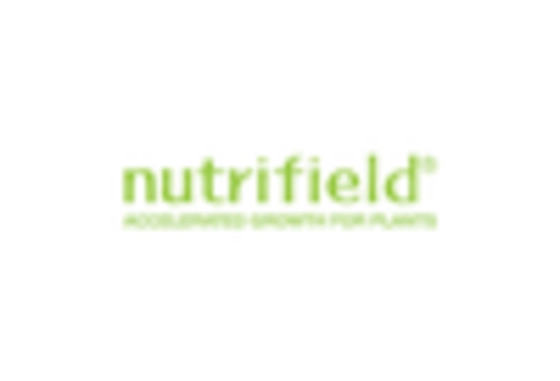Urban Agriculture Growth
The growth of urban agriculture is significantly influencing the Hydroponic Nutrients Market. As urban populations continue to expand, the demand for locally sourced food is increasing. Hydroponics offers a viable solution for urban farming, allowing for the cultivation of crops in limited spaces. This trend is supported by data showing that urban farming initiatives are gaining traction in various cities, with many municipalities promoting hydroponic systems as a means to enhance food security. Consequently, the demand for specialized hydroponic nutrients tailored for urban environments is likely to rise. This shift presents opportunities for businesses to develop targeted products that cater to the unique needs of urban growers within the Hydroponic Nutrients Market.
Technological Innovations
Technological innovations play a pivotal role in shaping the Hydroponic Nutrients Market. Advances in nutrient formulation and delivery systems have led to more efficient and effective hydroponic solutions. For instance, the introduction of precision nutrient dosing systems allows growers to optimize nutrient uptake, thereby enhancing crop yields. Market data indicates that the adoption of smart farming technologies, including IoT devices for monitoring nutrient levels, is on the rise. This trend is expected to drive the market forward, as growers seek to maximize productivity while minimizing resource use. As a result, companies that invest in research and development of cutting-edge nutrient technologies are likely to thrive in the Hydroponic Nutrients Market.
Health and Wellness Trends
Health and wellness trends are driving changes in the Hydroponic Nutrients Market. As consumers increasingly prioritize nutrition and health, there is a growing interest in produce grown with high-quality hydroponic nutrients. Research indicates that hydroponically grown crops can have higher nutrient density compared to conventionally grown produce. This has led to a surge in demand for hydroponic systems that utilize premium nutrient solutions. Additionally, the rise of health-conscious consumers is prompting manufacturers to innovate and create nutrient formulations that enhance the nutritional profile of crops. As a result, businesses that align their product offerings with health trends are likely to see increased demand in the Hydroponic Nutrients Market.
Sustainability Initiatives
The Hydroponic Nutrients Market is experiencing a notable shift towards sustainability initiatives. As consumers become increasingly aware of environmental issues, there is a growing demand for eco-friendly nutrient solutions. This trend is reflected in the rising number of companies that are developing organic and biodegradable hydroponic nutrients. According to recent data, the market for organic hydroponic nutrients is projected to grow at a compound annual growth rate of approximately 12% over the next five years. This shift not only caters to consumer preferences but also aligns with regulatory pressures aimed at reducing chemical usage in agriculture. Consequently, businesses that prioritize sustainable practices are likely to gain a competitive edge in the Hydroponic Nutrients Market.
Government Support and Policies
Government support and policies are emerging as a crucial driver in the Hydroponic Nutrients Market. Various governments are recognizing the potential of hydroponics to contribute to food security and sustainable agriculture. Initiatives such as grants, subsidies, and research funding are being implemented to encourage the adoption of hydroponic systems. Market data suggests that regions with supportive policies are witnessing accelerated growth in hydroponic farming, leading to increased demand for hydroponic nutrients. This trend indicates that businesses operating in the Hydroponic Nutrients Market may benefit from favorable regulatory environments that promote innovation and investment in hydroponic technologies.


















Leave a Comment